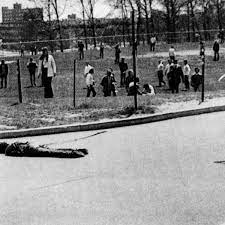-
Best Australian Pokies Best Payout
Play Free 777 Pokies Online
What Are the Best Australian Pokies to Win Big On
What Are the Best Online Pokies with Low Minimum Deposits for Real Money in Australia
New Australian Pokies Accepting PayID
What Are the Best Strategies to Win in Online Pokies with Bonus Rounds in Australia
Tips for Winning Top Australian Pokies
What Online Casinos Offer Free Play Pokies with Welcome Bonuses in Australia
Australian Slot Games
Payout Ratio Pokies with Welcome Bonus

How has the Kent State shooting affected the campus of Kent State for the last 50 years? Did the shooting change anything? How old were the National Guard members who shot the students?
Kent State shooting
Please write a full sentence outline on the topic: Kent State Shooting.
Questions to think about:
How has the Kent State shooting affected the campus of Kent State for the last 50 years? Did the shooting change anything? How old were the National Guard members who shot the students? Were they in similar age to the students? How did the situation get so out of control that they had to fire their weapons?
Please follow the style format (Chicago Manuel of Style). NO TITLE PAGE, PLEASE USE FOOTNOTES (you can use primary and secondary sources that you have already found for me)
On May 4, 1970, members of the Ohio National Guard trying to disperse a crowd of student demonstrators at Kent State University opened fire, killing four students and wounding nine others.
More than any other single event, the Kent State shootings would become a focal point of the ongoing, bitter divisions among Americans over the Vietnam War. The deadly outburst marked the culmination of several days of confrontations between law enforcement and protesters, which had begun after President Richard M. Nixon announced in a TV broadcast that he had authorized U.S. troops to invade Cambodia.
Nixon’s decision, which expanded the Vietnam War at a time when the United States had been in the process of withdrawing its troops, immediately sparked anti-war protests at colleges across the country—including Kent State.
Nixon’s Invasion of Cambodia Triggers Protests

President Richard Nixon during a television address regarding military actions in Cambodia, 1970.
Corbis/Getty Images
May 1, 1970
Around noon on the day after Nixon’s speech, some 500 Kent State students and faculty gather on the Commons, a large, grassy area in the middle of campus. They bury a copy of the Constitution to symbolize Nixon’s “murder” of constitutional principles by invading Cambodia without a declaration of war or consultation with Congress. A second rally that afternoon also ends peacefully.
National Guard Arrives at Kent State
May 2
Worried about more unrest, Satrom asks the governor, James Rhodes, to mobilize the Ohio National Guard. When Guardsmen begin arriving on the Kent State campus that evening, they find the school’s Army Reserve Officer Training Corps (ROTC) building has been set on fire. A crowd of some 1,000 people surround the building, many of them cheering and confronting firefighters to prevent them from extinguishing the blaze. Using tear gas and bayonets, the National Guardsmen clear the campus by midnight, ordering students into their dorms.
WATCH: The Kent State Shootings
May 3
By Sunday, more than 1,000 National Guardsmen have arrived on campus. Governor Rhodes flies to Kent that morning, and holds a press conference calling the demonstrators “the worst type of people that we harbor in America.” With Rhodes’ support, Kent State administrators announce they are banning a protest rally planned for the next day. Further confrontations between students and Guardsmen break out that night after demonstrators assemble on the Commons near the Victory Bell, which is normally used to celebrate football victories.
May 4
Defying the ban, people begin gathering on the Commons around 11 a.m. By noon, some 3,000 people are there, including a core group of some 500 demonstrators around the Victory Bell, and many more onlookers. The target of their protests shifts from Nixon, Cambodia and the Vietnam War, to the National Guard and its occupation of Kent State.
Attachments
